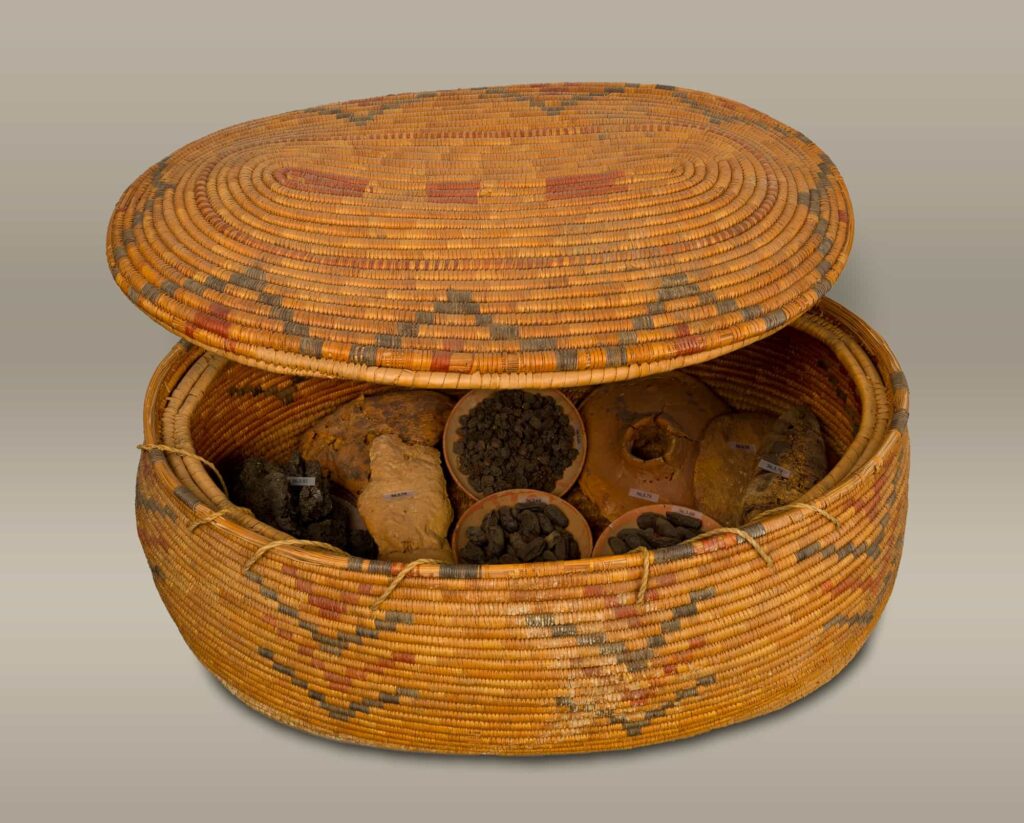The Large Oval Storage Basket is a basket dating back to approximately 1492 BC to 1473 BC, belonging to ancient Egyptian art.
It was discovered between the years 1935 and 1936 during archaeological excavations carried out inside the tomb of Hatnefer and Ramose. The tomb is located in the necropolis of Sheikh Abd el-Qurna on the west bank of the Nile River, near the city of Thebes in Egypt.
Shortly after its discovery in 1936, the Large Oval Storage Basket became part of the art collection of the Metropolitan Museum of Art in New York, United States of America.
Description
The basket measures 63.5 cm in length, 23 cm in height, and 40 cm in width. The lid measures 56 cm in length, 4 cm in height, and 32 cm in width.
It is made of palm leaf, linen cord, and halfa grass (also known as kusha grass).
This is an oval-shaped basket that also has a slightly convex-shaped lid.
Both the basket and the lid are made from large rolls of grass that have been sewn with the same grass. In addition, a two-coil tab has been attached to the inside of the basket using strips of palm leaf.
The exterior is decorated with chevrons that have been created with dyed grass wrapped around the coils.
It should be noted that various types of bread, date and raisin dishes, palm nuts, and other foods have been found inside.
Finally, it should be emphasized that researchers think that the Large Oval Storage Basket was deposited inside the tomb in order to provide all the deceased who were buried with the necessary items for the afterlife. Additionally, the basket is considered a food basket to nourish the spirits of the deceased.
The basket is currently in the Metropolitan Museum of Art in New York, United States of America.



Read more: How did ancient Egyptians bake bread?






